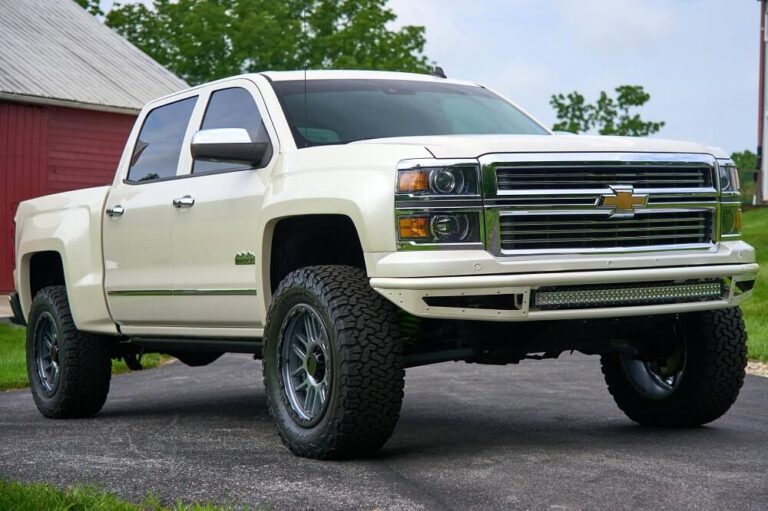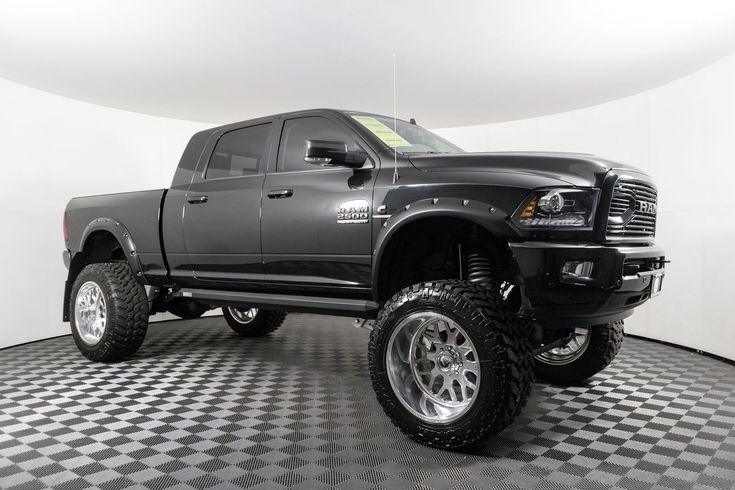Tri Axle Yardage: Mastering the Art of Material Transport
Tri Axle Yardage: Mastering the Art of Material Transport cars.truckstrend.com
Introduction: Unearthing the Power of Tri-Axle Yardage
In the vast and dynamic world of construction, landscaping, mining, and aggregate supply, the efficient movement of bulk materials is not just a convenience—it’s the backbone of profitability and project success. At the heart of this critical operation lies the "Tri Axle Yardage," a term that signifies the volumetric capacity of a tri-axle dump truck, typically measured in cubic yards. More than just a number, understanding and optimizing tri-axle yardage is crucial for accurate bidding, efficient scheduling, cost control, and ensuring regulatory compliance.
Tri Axle Yardage: Mastering the Art of Material Transport
Tri-axle trucks, with their distinctive three rear axles, are workhorses designed to haul significant payloads, bridging the gap between smaller tandem axle trucks and larger, more specialized transport vehicles. Their ability to carry substantial volumes of diverse materials, from gravel and sand to soil and demolition debris, makes them indispensable. This comprehensive guide will delve into the intricacies of tri-axle yardage, exploring everything from its definition and calculation to the factors that influence it, practical tips for optimization, and common challenges faced in the field. By the end of this article, you will have a thorough understanding of how to leverage tri-axle yardage to enhance your operational efficiency and bottom line.
What is a Tri-Axle Truck? A Foundation for Understanding Yardage
Before diving deep into yardage, it’s essential to understand the vehicle itself. A tri-axle truck is a heavy-duty commercial vehicle characterized by its configuration of three axles at the rear of the truck. This design distributes the load over a larger footprint, allowing the truck to legally carry heavier payloads compared to a tandem axle truck (which has two rear axles).
Typically, a tri-axle dump truck consists of:
- The Cab: Where the driver operates the vehicle.
- The Chassis: The frame that supports the body and engine.
- The Dump Body (Box): The open-top container designed to hold bulk materials, equipped with a hydraulic lift system to unload by tilting.
- Axles: One steering axle at the front and three drive/load-bearing axles at the rear. This configuration is key to its increased payload capacity and improved stability.

The robust design and enhanced weight distribution capabilities of tri-axle trucks make them a preferred choice for transporting large quantities of aggregates, earth, asphalt, and other bulk commodities, directly impacting the "yardage" they can effectively deliver.
Understanding "Yardage": The Unit of Measurement
"Yardage" in this context refers to cubic yards (yd³). A cubic yard is a unit of volume equal to the volume of a cube with sides one yard (or three feet) in length.
- 1 cubic yard = 3 feet x 3 feet x 3 feet = 27 cubic feet.
When discussing tri-axle yardage, we are essentially talking about the volume of material that the truck’s dump body can hold. While the physical dimensions of the dump body determine its maximum volumetric capacity, the actual yardage a truck can carry per trip is often limited by factors beyond just volume, most notably weight.
Factors Influencing Tri-Axle Yardage Capacity
The "effective" tri-axle yardage—what a truck can realistically and legally haul—is a complex interplay of several variables:
-
Truck Specifications (Volumetric Capacity):
- Dump Body Dimensions: The length, width, and height of the dump body directly dictate its maximum volumetric capacity. Trucks vary in size; some are built for larger volumes, others for heavier but smaller volumes.
- Body Material: Steel vs. aluminum. Aluminum bodies are lighter, allowing for greater payload capacity (more material by weight) for the same GVWR, but might be less durable for abrasive materials.
-
Legal Weight Limits (Gross Vehicle Weight Rating – GVWR):
- This is often the primary limiting factor. Each state or province has specific regulations regarding the maximum allowable weight for commercial vehicles, including limits per axle, gross vehicle weight (GVW), and bridge laws (which consider axle spacing).
- A tri-axle truck typically has a higher GVWR than a tandem, but there’s a ceiling. Exceeding these limits leads to hefty fines, safety hazards, and accelerated vehicle wear.
- The "tare weight" (empty weight) of the truck must be subtracted from the GVWR to determine the maximum payload weight.
-
Material Density:
- This is crucial. A cubic yard of topsoil weighs significantly less than a cubic yard of gravel or concrete rubble.
- Light Materials: (e.g., mulch, topsoil, wood chips) often "cube out" a truck, meaning the dump body is full volumetrically before it reaches its weight limit. A tri-axle might carry 20-25 cubic yards of mulch.
- Heavy Materials: (e.g., gravel, sand, asphalt, concrete) often "weigh out" a truck, meaning the truck hits its maximum legal weight limit before the dump body is completely full. A tri-axle might carry only 15-18 cubic yards of dense gravel.
- Typical Densities (approximate, varies by moisture and composition):
- Mulch: 400-600 lbs/yd³
- Topsoil: 2,000-2,400 lbs/yd³ (1-1.2 tons/yd³)
- Sand: 2,700-3,000 lbs/yd³ (1.35-1.5 tons/yd³)
- Gravel (Crushed Stone): 2,800-3,200 lbs/yd³ (1.4-1.6 tons/yd³)
- Asphalt/Concrete Rubble: 3,500-4,000 lbs/yd³ (1.75-2 tons/yd³)
-
Loading Practices:
- Heaping vs. Level Loads: While a truck can be "heaped," this might exceed legal height limits or make the load unstable. Accurate yardage calculation usually refers to a level load or a calculated heaped volume that adheres to safety and legal standards.
- Even Distribution: Proper loading ensures weight is distributed evenly across axles, preventing overweight issues on individual axles.
-
Regional and State Regulations:
- Weight limits, permissible vehicle dimensions, and even routes can vary significantly between states, provinces, and even local municipalities. Staying informed about the regulations in your operating area is paramount.
Calculating Tri-Axle Yardage: A Practical Guide
Calculating the volumetric capacity of a dump truck is relatively straightforward, but converting that to effective yardage requires considering material density and weight limits.
1. Volumetric Calculation (Theoretical Maximum):
For a rectangular dump body:
- Volume (Cubic Feet) = Length (ft) x Width (ft) x Height (ft)
- Volume (Cubic Yards) = Volume (Cubic Feet) / 27 (since 1 yd³ = 27 ft³)
Example: A dump body is 18 feet long, 8 feet wide, and 5 feet high.
- Volume (ft³) = 18 ft x 8 ft x 5 ft = 720 ft³
- Volume (yd³) = 720 ft³ / 27 = 26.67 cubic yards
Note: This is the physical capacity. Many dump bodies are wider at the top than the bottom, or have sloped sides, requiring more complex geometry or using manufacturer specifications.
2. Effective Yardage Calculation (Real-World Capacity):
This involves balancing the theoretical volume with the material’s density and the truck’s legal payload capacity.
Steps:
-
Determine Truck’s Max Payload Weight:
- Max Payload (lbs) = GVWR (lbs) – Truck Tare Weight (lbs)
- Example: GVWR = 80,000 lbs, Tare Weight = 30,000 lbs.
- Max Payload = 80,000 – 30,000 = 50,000 lbs (25 tons).
-
Determine Material Density: Find the approximate density of the material you’re hauling in lbs/yd³ (refer to the typical densities listed above or get specific data).
- Example: Crushed Gravel = 3,000 lbs/yd³.
-
Calculate Max Yards by Weight:
- Max Yards (by weight) = Max Payload (lbs) / Material Density (lbs/yd³)
- Example (Gravel): 50,000 lbs / 3,000 lbs/yd³ = 16.67 cubic yards.
-
Compare Volumetric vs. Weight-Limited Yards: The actual effective yardage for that trip is the lower of the two values.
- In our example: Volumetric Capacity = 26.67 yd³, Weight-Limited Capacity (Gravel) = 16.67 yd³.
- Therefore, for gravel, this truck can only legally and safely carry 16.67 cubic yards, even though its box could physically hold more if the material were lighter.
Benefits of Optimizing Tri-Axle Yardage
Accurately understanding and optimizing tri-axle yardage translates directly into significant operational advantages:
- Cost Savings: Fewer trips mean less fuel consumption, reduced driver wages, and lower vehicle maintenance costs per unit of material transported.
- Increased Efficiency and Productivity: Materials arrive on schedule, reducing project delays. Optimized loads maximize the output of each truck and driver.
- Reduced Wear and Tear: Operating within legal weight limits prevents undue stress on the truck’s engine, transmission, suspension, and tires, extending its lifespan and reducing repair costs.
- Better Project Scheduling and Material Management: Accurate yardage calculations allow for precise planning of material deliveries, preventing over-ordering or under-ordering and minimizing on-site storage needs.
- Regulatory Compliance: Avoiding overweight fines and ensuring safe operation keeps your business in good standing with authorities and insurance providers.
- Environmental Benefits: Fewer trips mean a reduced carbon footprint and lower emissions per ton of material moved.
Tips for Maximizing Tri-Axle Yardage
To truly leverage the potential of your tri-axle fleet, consider these practical tips:
- Know Your Truck’s True Capacity: Don’t just rely on advertised figures. Get your trucks weighed empty (tare weight) regularly. Understand their legal GVWR and axle weight limits specific to your operating region.
- Understand Material Densities: Maintain a database of common material densities you haul. Account for variations due to moisture content (e.g., wet sand is heavier than dry sand).
- Invest in Onboard Scales: For large operations, onboard weighing systems provide real-time feedback to drivers and loaders, ensuring optimal loading without exceeding legal limits. This is a game-changer for efficiency.
- Proper Loading Techniques:
- Train loaders (excavator/loader operators) on how to distribute weight evenly across the truck’s axles.
- Avoid "pyramiding" loads too high, which can be unstable and exceed legal height limits.
- Ensure loads are covered with tarps when required by law or for material retention.
- Regular Maintenance: A well-maintained truck runs more efficiently and is less likely to break down, ensuring consistent delivery schedules.
- Driver Training: Educate drivers on weight distribution, legal limits, and the importance of reporting issues. Their vigilance is key to safe and efficient operation.
- Optimize Routes: Plan routes that avoid weigh stations if possible (while staying compliant), and minimize travel distance, especially for heavy loads.
Challenges and Solutions in Tri-Axle Yardage Management
Despite its benefits, managing tri-axle yardage presents several challenges:
- Challenge: Overloading Risks:
- Consequences: Significant fines, points on commercial driving records, increased accident risk, accelerated vehicle wear, insurance issues.
- Solution: Strict adherence to weight limits, use of onboard scales, regular weigh-ins, clear communication between dispatch, drivers, and loaders.
- Challenge: Under-loading (Inefficiency):
- Consequences: Wasted fuel, increased trips, higher operational costs per unit, delayed project timelines.
- Solution: Accurate material density data, precise loading techniques, clear communication of target yardage/weight per load.
- Challenge: Varying Material Characteristics:
- Consequences: Difficulty in consistent loading, unexpected weight variations.
- Solution: Develop a comprehensive material density chart for all common materials, adjust loading targets based on material type and moisture content.
- Challenge: Regulatory Compliance:
- Consequences: Fines, vehicle impoundment, operational shutdowns.
- Solution: Stay updated on local, state, and federal weight and dimension laws. Consult with industry associations or legal experts if unsure.
- Challenge: Estimating Accuracy:
- Consequences: Misleading project bids, budget overruns, material shortages or surpluses.
- Solution: Use consistent measurement methods, cross-reference with suppliers, and build in a small contingency for variations.
Table: Typical Tri-Axle Hauling Costs & Information (Illustrative Example)
This table provides a hypothetical overview of costs and information related to tri-axle hauling. Actual prices vary significantly based on region, fuel costs, specific material, hauling distance, supplier, and market demand. Always obtain quotes from local suppliers.
| Category | Material Type | Est. Volume per Load (Yards) | Est. Weight per Load (Tons) | Typical Cost Per Yard (Range) | Key Factors Influencing Cost |
|---|---|---|---|---|---|
| Light Materials | Mulch (Pine/Hardwood) | 20 – 25 | 4 – 6 | $20 – $40 | Low density, high volume, often less heavy-duty truck required. |
| Topsoil (Screened) | 18 – 22 | 9 – 11 | $25 – $50 | Moderate density, common use, may vary with quality. | |
| Medium Materials | Fill Dirt | 16 – 20 | 10 – 12 | $20 – $45 | Varies with quality and if it’s "clean" fill. |
| Sand (Washed) | 15 – 18 | 10 – 13 | $30 – $60 | Moderate-high density, specific types (e.g., masonry sand). | |
| Heavy Materials | Gravel (Crushed Stone) | 14 – 17 | 10 – 13 | $35 – $70 | High density, common aggregate, widely available. |
| Asphalt Millings | 14 – 16 | 10 – 13 | $25 – $55 | Recycled material, price can be lower than new aggregates. | |
| Concrete Rubble | 12 – 15 | 10 – 12 | $40 – $80 | High density, often involves disposal fees. | |
| Specialty/Variable | Aggregate Base | 14 – 17 | 10 – 13 | $35 – $75 | Specific blends, often for road construction. |
| Snow (melted) | 20 – 25 | 6 – 8 | Varies | Seasonal, often charged hourly or per load. |
General Cost Factors (Affecting all materials):
- Distance: Longer hauls significantly increase cost.
- Fuel Prices: Volatile, direct impact on operating costs.
- Labor: Driver wages, loading/unloading time.
- Tipping/Disposal Fees: Especially for waste materials.
- Material Cost: The actual cost of the material itself (separate from hauling).
- Access: Difficult site access can increase costs.
- Volume Discounts: Larger orders may receive a lower per-yard rate.
Frequently Asked Questions (FAQ) about Tri-Axle Yardage
Q1: How much does a tri-axle truck typically hold?
A1: A tri-axle dump truck typically holds between 14 to 25 cubic yards of material. However, the actual amount it can haul per trip is primarily limited by the material’s weight and the truck’s legal payload capacity. For heavy materials like gravel or sand, it might be 14-17 yards, while for lighter materials like mulch or topsoil, it could be 20-25 yards.
Q2: Is it always 20 yards for a tri-axle?
A2: No, this is a common misconception. While 20 yards is a frequently quoted average or theoretical maximum for some materials, it’s rarely a universal constant. The actual capacity depends heavily on the material’s density (weight per cubic yard) and the truck’s legal weight limits.
Q3: How do I calculate how many loads I need for my project?
A3:
- Determine your total material volume needed in cubic yards (e.g., from your project plans or supplier estimates).
- Estimate the effective yardage per tri-axle load for the specific material you’re using (considering its density and the truck’s likely weight limit).
- Divide your total volume needed by the effective yardage per load.
- Example: Need 100 cubic yards of gravel. Each tri-axle can carry 15 cubic yards of gravel. 100 / 15 = 6.67 loads. You would need 7 loads.
Q4: What’s the main difference between a tandem axle and a tri-axle dump truck regarding capacity?
A4: A tandem axle truck has two rear axles, while a tri-axle has three. The additional axle on a tri-axle allows it to distribute weight over a larger area, increasing its legal Gross Vehicle Weight Rating (GVWR) and thus its payload capacity. Tri-axles can typically haul 30-50% more material by weight than a tandem, leading to fewer trips for large projects.
Q5: What are the risks of overloading a tri-axle truck?
A5: Overloading carries significant risks, including:
- Fines: Heavy penalties from law enforcement and Department of Transportation (DOT).
- Safety Hazards: Increased stopping distances, reduced maneuverability, higher risk of tire blowouts, suspension damage, and rollovers.
- Vehicle Damage: Accelerated wear and tear on tires, brakes, suspension, axles, and frame, leading to costly repairs and reduced vehicle lifespan.
- Insurance Issues: Potential for insurance claims to be denied or rates to increase.
Q6: How accurate are yardage estimates from suppliers?
A6: Reputable suppliers generally provide accurate estimates based on standard material densities and truck capacities. However, always verify. Factors like material moisture content, compaction during loading, and even the "fluffiness" of loose materials can cause slight variations. It’s always wise to order slightly more than you calculate, especially for critical projects.
Q7: Can different tri-axle trucks have different capacities?
A7: Yes, absolutely. Even among tri-axle trucks, there can be variations in dump body dimensions (length, width, height), construction material (steel vs. aluminum), and the specific GVWR allowed by the truck’s chassis and axle ratings. Always confirm the specific truck’s capabilities if precise yardage is critical.
Conclusion: Driving Efficiency with Informed Tri-Axle Yardage
Understanding "Tri Axle Yardage" is far more than knowing the volume a truck can hold; it’s about mastering the complex interplay of truck specifications, material density, and legal weight limits to achieve optimal efficiency and profitability. From accurate project bidding to seamless material delivery, every aspect of bulk material transport hinges on this knowledge.
By diligently calculating effective yardage, embracing best loading practices, leveraging technology like onboard scales, and staying abreast of regulatory requirements, businesses can significantly reduce operational costs, enhance productivity, and ensure the safety and longevity of their valuable fleet. In the competitive landscape of material hauling, the ability to maximize every cubic yard is not just an advantage—it’s a fundamental pillar of success.




